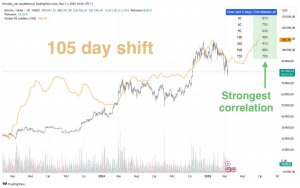The Rise of the Gig
While the Pandemic triggered many changes, the push toward the Gig Economy can be seen as the result of economic forces that have been brewing for decades.

The Gig Economy is based on ‘gigs’, or short-term, contractual, or freelance jobs rather than full-time work with benefits. The IRS describes the Gig Economy as “activity where people earn income providing on-demand work, services or goods”. It includes traditional work like freelance web design or contractual consulting, but also new services such as rideshare and delivery gigs and, as it is with Hy, content creation on social media sites like TikTok, Instagram, YouTube, and LinkedIn.

Spurred by several forces, gig work has burgeoned in recent years. McKinsey estimates that gig workers now make up some 36 percent of the workforce, up from 27 percent in 2016. Data from payroll platform Gusto indicate that the ratio of contractors has jumped 63 percent since 2019 to one contractor for every five employees. With dour hiring and layoff news in the new year, and exponential growth in the AI space, we anticipate the Gig Economy to continue to grow, marking one of the most significant economic changes in decades.

The rise in the Gig Economy has been bolstered by Pandemic-related changes in the last three years, especially the widespread work-from-home arrangements made in 2020 and maintained in subsequent years, the record number of job quits during the Great Resignation of 2021, the supply chain crisis 2021-23, the surge in inflation 2021-23, and the large-scale layoffs of 2022-23.
But, while the Pandemic triggered many changes, the push toward the Gig Economy can be seen as the result of economic forces that have been brewing for decades. We take these forces to be: (1) The increasing costs of the conventional employee-worker paradigm, and (2) the widespread proliferation of advanced productivity applications including remote conferencing and AI. This paper will provide an examination of both of these and conclude with recommendations for employers, employees, and gig workers alike.
This article is a part of a series based on our Annual Strategic Report, The Future Is Gig. Download the report here.





